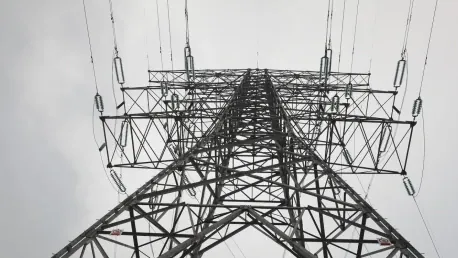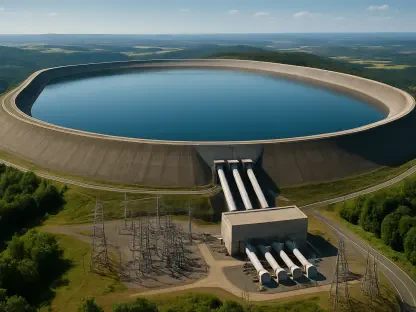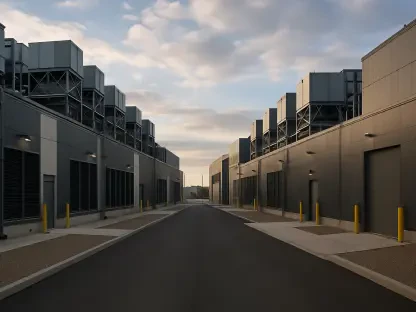The recently approved transmission projects by the Midcontinent Independent System Operator (MISO) represent a groundbreaking advancement in the U.S. energy sector, aiming to address local reliability needs, support growth, and enhance grid resilience. The extensive portfolio consists of 488 projects spanning over 5,000 miles and constitutes the largest collection of transmission initiatives in U.S. history. These projects encompass the Long Range Transmission Planning (LRTP) Tranche 2.1 and the Joint Targeted Interconnection Queue (JTIQ), coordinated with the Southwest Power Pool (SPP), emphasizing both regional collaboration and extensive system developments. When completed, they will immensely bolster the U.S. transmission infrastructure, improving reliability and resilience against extreme weather conditions while ensuring broader access to generation resources and lower-cost energy, including renewables, for consumers.
Enhancing Grid Resilience and Reliability
One of the core objectives of MISO’s extensive transmission projects is to strengthen the resilience and reliability of the U.S. electrical grid, particularly in the face of increasingly extreme weather events. The infrastructure improvements are designed to reduce system congestion, thereby enhancing the grid’s ability to maintain steady and reliable power delivery to consumers. With the implementation of the LRTP Tranche 2.1 projects spread across nine states in MISO’s Midwest subregion, including Illinois, Indiana, Iowa, Michigan, Minnesota, Missouri, North Dakota, South Dakota, and Wisconsin, the initiative will create a robust 765kV backbone. This backbone aims to provide a cost-to-benefit ratio of 1.8 to 3.5, with potential benefits exceeding $72 billion.
MISO’s approach to resilience also includes addressing local reliability issues through 459 projects across its 15 states. This segment of the expansion plan focuses on 932 miles of infrastructure upgrades with a total investment of $6.7 billion. These projects ensure that the grid can meet local load growth needs by improving infrastructure reliability and expanding power delivery capabilities. In tandem with the targeted large-scale infrastructure investments, these local initiatives reflect MISO’s commitment to addressing both immediate and long-term reliability concerns, underscoring the critical nature of this comprehensive strategy.
Supporting Growth and Lower-Cost Energy Access
In addition to increasing reliability and resilience, MISO’s expansive transmission projects are poised to support systemic growth and facilitate broader access to low-cost energy resources. By investing in a clearer and more efficient distribution of energy resources, these projects will reduce transmission system congestion and improve the overall flow of electricity. This improvement is particularly significant for integrating renewable energy sources, which are essential to the evolving energy landscape. The initiative’s emphasis on Long Range Transmission Planning (LRTP) and the Joint Targeted Interconnection Queue (JTIQ) design ensures that new generation sources, including renewable energy, can be effectively interwoven into the existing grid framework, thereby providing consumers with more access to lower-cost energy.
The JTIQ projects, which span 490 miles and involve an investment of $1.6 billion, are strategically placed to facilitate new generation on the MISO/SPP seam. This collaborative effort is designed to enable 28 GW of new generation capacity, thereby addressing generation interconnections on a large scale. When operational, these projects will not only alleviate congestion but also optimize the distribution of energy sources across the connected regions. MISO’s work on the LRTP Tranche 2.1 and JTIQ portfolios exemplifies its targeted approach to transforming the grid, ensuring that energy resource allocations are more efficient and less costly for the end consumers.
MISO’s Leadership and Vision for Future Energy Infrastructure
MISO’s Chief Executive Officer, John Bear, stressed the importance of these initiatives, highlighting the rapid transition occurring in the energy landscape and the urgent need for implementation to sustain reliability. The MISO Transmission Expansion Plan (MTEP) of 2024 reflects this progressive vision, outlining substantial investments in various key areas. By focusing on both immediate and future needs, MISO’s projects signify a clear dedication to ensuring the grid’s reliability and adaptability in the face of emerging energy trends and challenges.
MISO’s Vice President of System and Resource Planning, Aubrey Johnson, echoed these sentiments, emphasizing the historic and transformative impact of the Tranche 2.1 and JTIQ portfolios. The JTIQ portfolio’s focus on facilitating future generator interconnections and the LRTP Tranche 2.1’s foundation for long-term grid strength highlight the strategic foresight behind these projects. Collectively, these initiatives provide a sturdy and forward-looking infrastructure foundation, ensuring that the U.S. electrical grid can accommodate future growth and innovation in the energy sector.
Comprehensive Solutions for an Evolving Energy Industry
MISO’s expansive transmission projects aim to increase reliability and resilience, support systemic growth, and widen access to low-cost energy resources. By improving the distribution and reducing congestion in the transmission system, these projects enhance electric flow, crucial for integrating renewable energy sources essential to today’s changing energy landscape. The initiative’s focus on Long Range Transmission Planning (LRTP) and the Joint Targeted Interconnection Queue (JTIQ) ensures that new generation sources, including renewable energy, are seamlessly incorporated into the existing grid, providing consumers with more low-cost energy options.
The JTIQ projects, covering 490 miles with a $1.6 billion investment, are strategically positioned to support new generation on the MISO/SPP seam, adding 28 GW of new generation capacity. This large-scale collaboration intends to tackle generation interconnections, easing congestion and optimizing energy distribution across connected regions. MISO’s efforts on LRTP Tranche 2.1 and JTIQ portfolios highlight a focused approach to grid transformation, making energy resource allocation more efficient and affordable for consumers.









